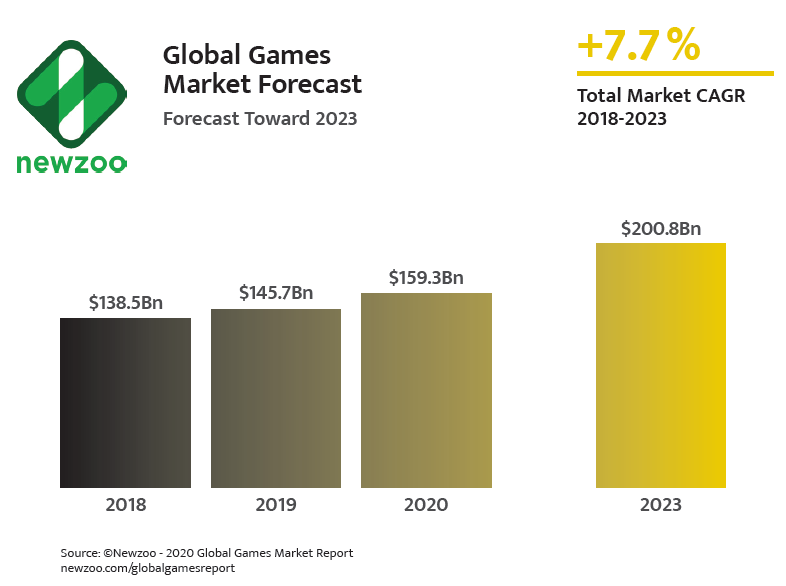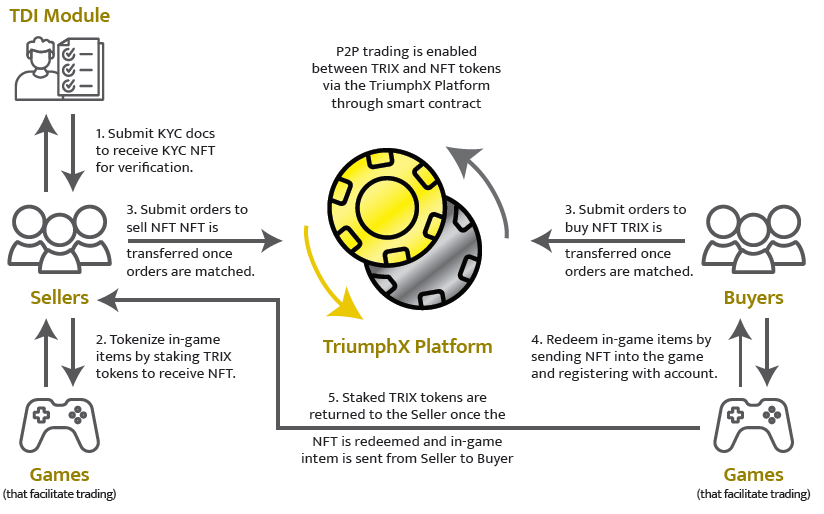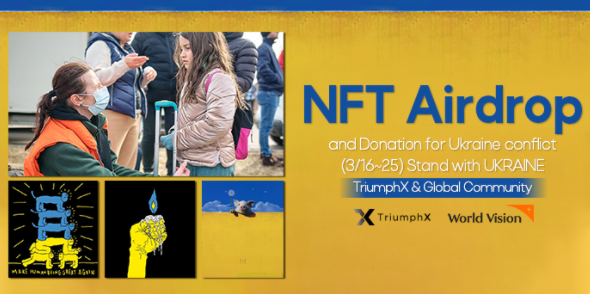Introduction to TriumphX (TRIX) part 1 — Tokenising the USD200 billion untapped global gaming market
Market overview

The global gaming industry has grown rapidly in the last decade with vibrant thriving communities growing from various games such as Fortnite. Newzoo estimated that the 2020’s global game market will generate revenues of $159.3 billion USD, which represents a healthy 9.3% year-on-year growth. The market is projected to eventually grow to @200.9 billion USD in 2023.
The vibrancy of the gaming market and Esport market has also led to a third market that is rapidly expanding; secondary market transactions for the digital in-game items. According to Juniper Research, the in-game item market is estimated to be at least $50 billion USD of Gross Merchandise Value. This market remains untapped for various reasons.
One major reason being secondary market trading of items is prohibited by the game owners. In the event that they are allowed, the game service providers or third parties service providers charge a hefty commission fee on the transactions.
The TriumphX team as part of the gamers’ community feels that there should be a better way to facilitate games item trading. Game items can be traded in a trust-less, secure yet decentralised secondary market that benefits both the buyer and seller.
Our solution: the TriumphX blockchain platform.
The TriumphX platform and features
- Non-Fungible token marketplace

Through TriumphX, gamers can tokenize Non-Fungible Tokens (NFTs) that represent the unique in-game items that they own. To tokenize these NFTs, gamers will be required to stake a small amount of TRIX tokens corresponding to a proportion of the in-game item’s value.
An API will validate the ownership of the items held by these users hence it is possible for the users to create a NFT of in-game items that have limited transferability as the item does not ever have to leave their inventory.
The item can also continue to be used while it is being actively traded among users until a buyer redeems the item. Through the same API and through smart contract capabilities within the TriumphX blockchain, the item will be automatically transferred to the buyer and the staked TRIX tokens will be released back to the seller.
2) ERC-1155 Token Standard Adoption (an improvement to ERC-721 or ERC-20)
NFTs will exist as ERC-1155 tokens on the Ethereum blockchain in the initial stages and future token standards that are backward compatible with the ERC-1155 token standard will be implemented to ensure interoperability across all blockchains within the TriumphX network.
ERC-1155 token standard was selected as it can manage multiple token types within a single deployed contract. This is beneficial for game developers as the ERC-1155 standard would allow each game to operate on a single smart contract. As a comparison, performing the same task using ERC-20 or ERC -721 will resulting in thousands of contracts, and with it, higher fees and transaction time. With that consideration, we expect the ERC-1155 standard to optimise transaction fees as multiple token types can be swapped at once.
3) Aggregated Public Database on NFTs
NFTs representing in game items on the blockchain will be aggregated under the same subset of items. For example, 2 “Legendary Dragon Sword” tokenized on TriumphX exist as 2 unique NFTs, but is recognised as the same item, hence can be used interchangeably with the same price. However, just like any blockchain, ownership traceability is still retained.
The ability to recognize different NFTs as the same item is extremely useful to gaming users. TriumphX Explorer is able to group these items together to generate useful statistics (such as the total number of items tokenized and in existence on the blockchain, the total historical traded price of such items, the number of items owned by each user). This allows the blockchain to identify any bad actor activities such as fraud or hoarding of in-game tokens.
4) Blockchain interoperability
TriumphX empowers users the ability to select their desired blockchain to trade their NFT assets. This flexibility gives users more control towards transactional trade-offs especially in transaction speed and cost.
TriumphX has a concrete plan for achieving interoperability through Polkadot, a cross-chain bridging network that Parity is developing in partnership with Substrate. This allow interoperability with existing blockchain platforms in Ethereum and EOS through parachains.
Through blockchain interoperability across Polkadot platform and other relating blockchains, NFTs and TRIX tokens on the TriumphX platform will attract more visibility and users, supported by the combined community and gaming fanbase of the various blockchains.
5) Alignment of Economic Interest with Game Service Providers
Game service providers are usually less receptive to leverage on blockchain technology to tokenize their in-game items into NFTs. A key reason lies in the fact that secondary markets lead to revenue slippages and weakens the provider’s control in the game, especially in new in-game item purchases. In essence, providers do not get any profit from secondary market trading, and these purchases tend to crowd-out the need to buy new-game items from the providers.
To resolve this, TriumphX aims to collaborate with games service providers through a staking and validator system. This system will give providers the ability to benefit from secondary market trading by receiving a portion of the trading transaction cost. This alignment of interest expands the entire economic pie for both gamers and game service providers, leading to economic benefits for all stakeholders; a win-win situation.
6) Gamers’ Community Engagement (Community Tokens)
The popularity of games has resulted in the growth of a vibrant gaming community. To unlock additional value from this community, game service providers will be able to create unique Community Tokens (CT) which exist as fungible utility tokens on the TriumphX blockchain, representing their game.
These CTs can be used as rewards to gamers for their gaming activity, community engagement or even to empower voting rights for selecting in-game events or skins. More importantly, these CTs can also be traded for money on the secondary markets. The possibilities are limitless and can be determined by the game service providers themselves.
All in all, TriumphX aims to provide a decentralised exchange to conduct peer-to-peer (P2P) trading without the need for hefty fees and to lose control of their digital in-game assets.
TriumphX was designed and built by gamers, for gamers.
**********************************
Follow our social media channels to keep up to date on our developments!
Twitter: https://twitter.com/TrixTriumphX
Telegram: https://t.me/TRIXcommunityEN
Website: http://trix.deeple.io/
Introduction to TriumphX (TRIX) — Tokenising the USD200 billion untapped global gaming market was originally published in TriumphX on Medium, where people are continuing the conversation by highlighting and responding to this story.


